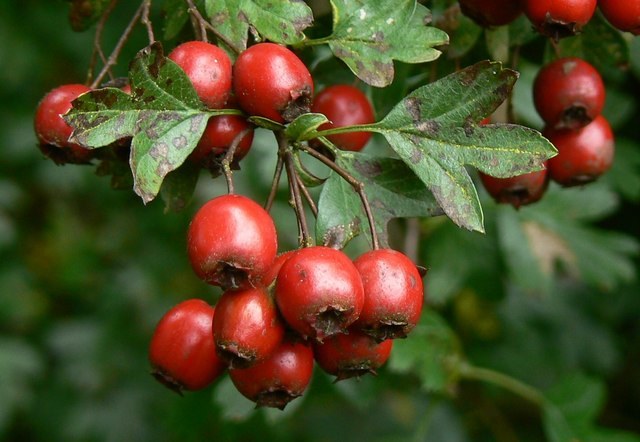Hawthorn

- Medicinal Uses: Various species of hawthorn, particularly Crataegus laevigata and Crataegus monogyna, have been used for centuries in traditional herbal medicine to support cardiovascular health. Hawthorn is believed to have properties that can help improve blood circulation, strengthen the heart muscle, and regulate blood pressure.
- Heart Health: Hawthorn extracts are often used to support heart health. They are believed to have positive effects on heart function, including increasing the strength of heart contractions and improving blood flow to the heart.
- Antioxidant Properties: Hawthorn contains antioxidants, such as flavonoids and procyanidins, which help protect cells from oxidative stress and contribute to overall health.
- Cholesterol Regulation: Some studies suggest that hawthorn extracts might have a role in regulating cholesterol levels and reducing LDL (“bad”) cholesterol.
- Blood Pressure Support: Hawthorn is often used to help regulate blood pressure, though scientific evidence on its effectiveness is limited and further research is needed.
- Digestive Health: Hawthorn has been used traditionally to support digestion and alleviate discomfort such as indigestion and stomach cramps.
- Anxiety and Sleep: Hawthorn is occasionally used to address anxiety and improve sleep quality, although its effectiveness for these purposes is not well-established.
- Berries and Leaves: Both the hawthorn berries and leaves are used in herbal preparations. The berries can be used to make jams, jellies, and teas. The leaves are also sometimes used in herbal remedies.
- Ornamental Value: Many hawthorn species have attractive flowers and foliage, making them popular choices for ornamental planting in gardens and landscapes.
- Wildlife Attraction: Hawthorn’s berries provide a source of food for various wildlife, including birds.
If you’re considering using hawthorn for medicinal purposes, it’s advisable to consult a healthcare professional, especially if you have existing health conditions or are taking medications.



Leave a Reply